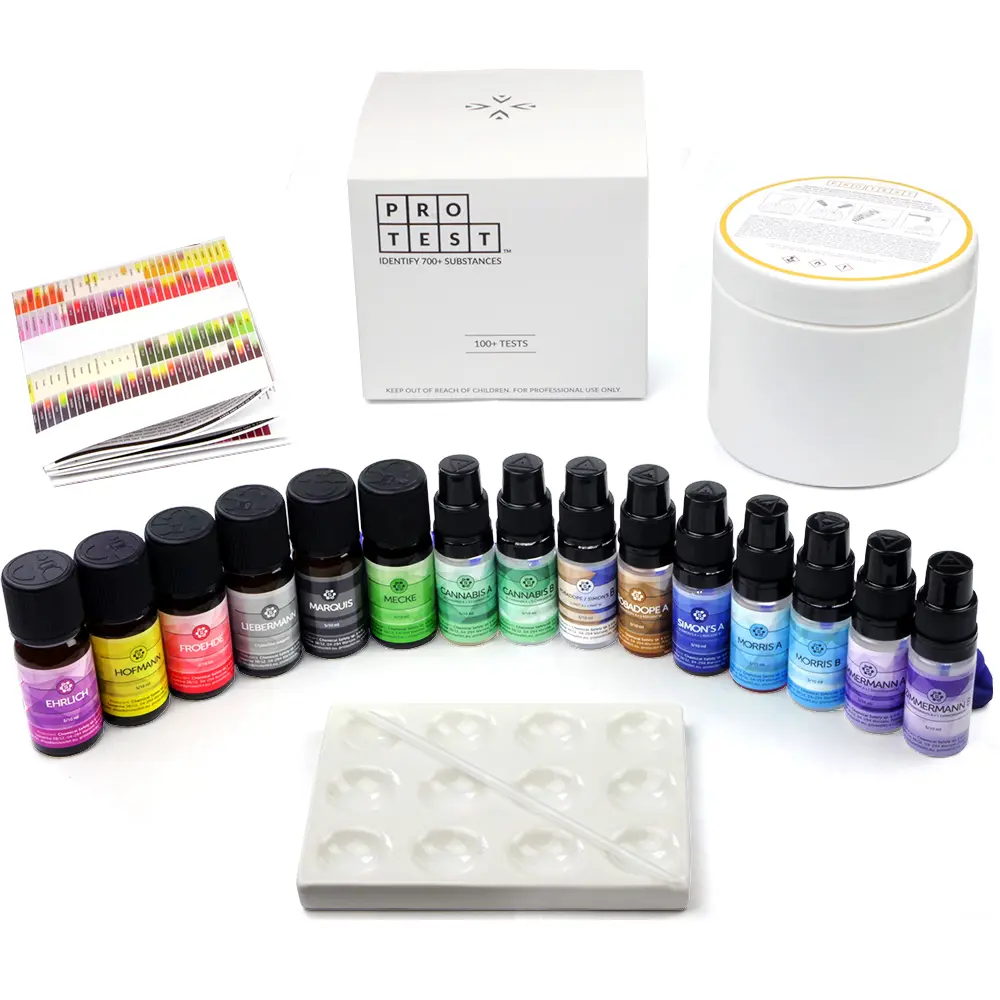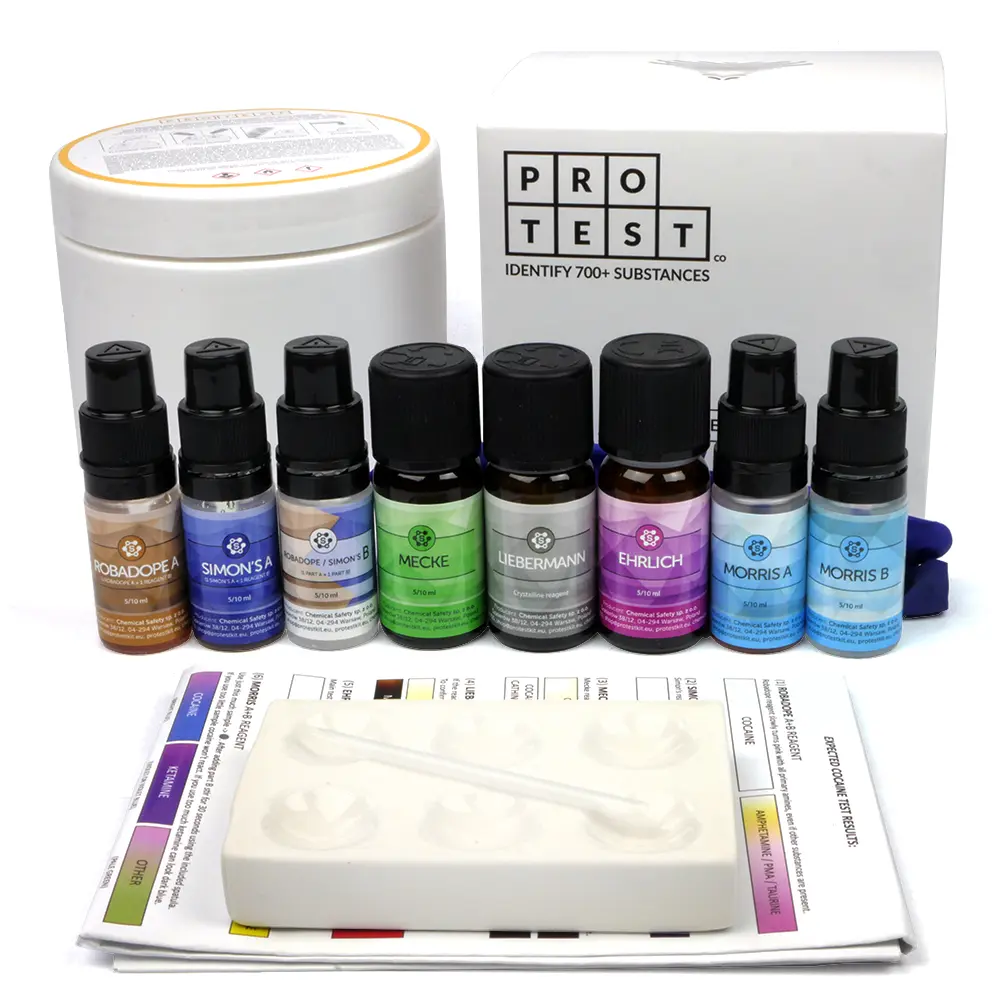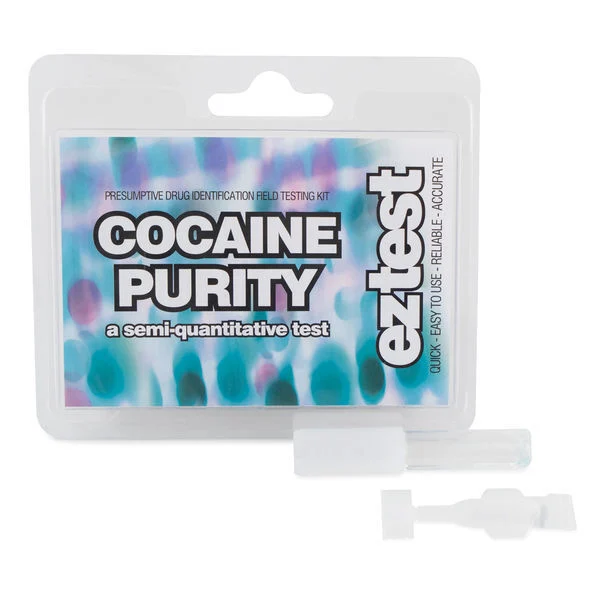How to detect lidocaine, benzocaine or procaine?
Cocaine is, despite its high price, one of the more frequently contaminated substances. Some of its typical impurities, besides serving as fillers, also increase toxicity, for example, lidocaine, levamisole, or stimulants such as meth/amphetamine, or even caffeine. Other substances that increase weight are often entirely accidental and have no known interactions, for example, random medications. Yet others are not even active substances, for example, glass particles that damage mucous membranes and increase the absorption surface of cocaine.
All these substances can be detected using a cocaine reagent kit in combination with a TLC-type purity test for cocaine. In this article, we will discuss how lidocaine, benzocaine, and procaine, i.e., those impurities that cause a similar local anesthetic effect to cocaine, can be detected.
Local anesthetic substances added to cocaine:
- Benzocaine
- Lidocaine
- Procaine
- Tetracaine
- Robadope rules out 2C, amphetamine, MDA, PMA, or taurine.
- Simon’s rules out MDMA, methamphetamine, PMMA, cathinones, to some extent, levamisole.
- Mecke rules out lidocaine, cathinones, and various stimulants.
- Liebermann rules out phenacetin, ephedrine, lidocaine, levamisole, methamphetamine, cathinones, additional alkaloids from the coca plant. If Liebermann reacts to orange, it may indicate the presence of benzoylecgonine, methylecgonidine, or tropacocaine.
- Ehrlich detects lidocaine, benzocaine, procaine, or tetracaine.
- Morris confirms the presence of cocaine.
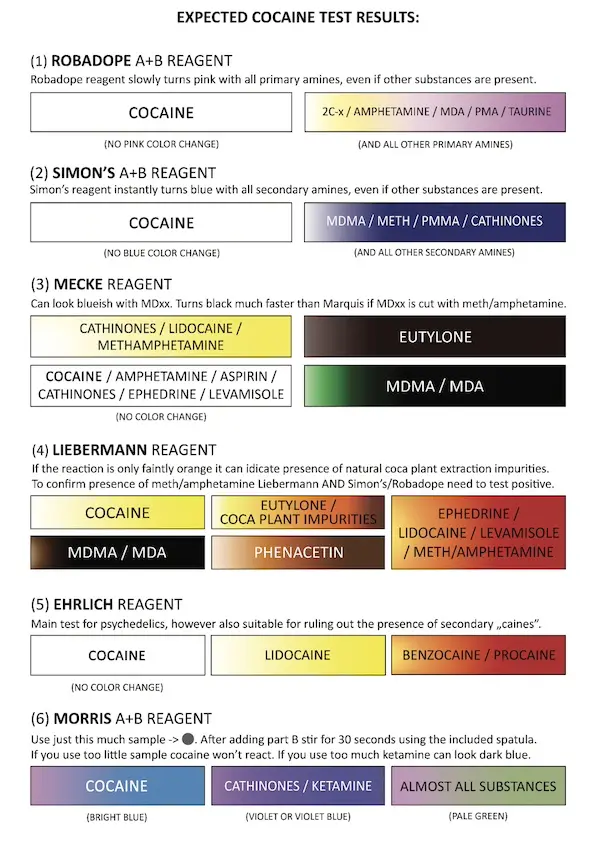
Cocaine test kit chart
How to check the presence of lidocaine, benzocaine, procaine, and tetracaine
Secondary -caines (benzocaine, lidocaine, procaine, tetracaine) can be detected with Mecke, Ehrlich, and to some extent, Morris reagents.
Mecke reagent will react with lidocaine, showing a yellow color.
Similarly, Ehrlich will react to yellow in the presence of lidocaine, but orange with benzocaine and procaine.
Morris reagent is somewhat more challenging to interpret and usefull only if cocaine is not present at all. It does not react with benzocaine, and the blue color changes with lidocaine and procaine discipate fast, unlike with cocaine.
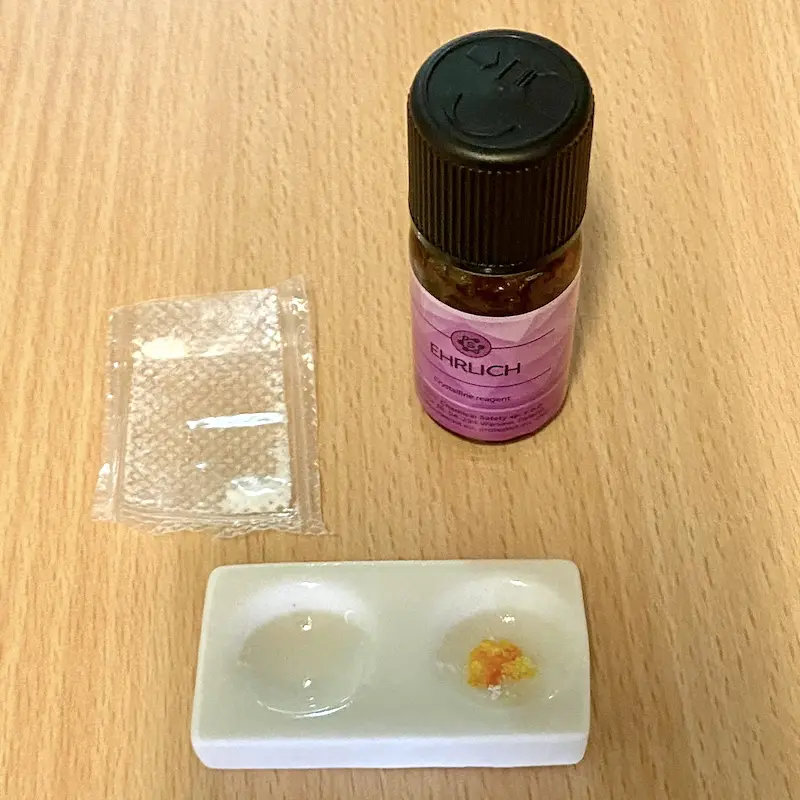
Ehrlich color change with procaine or benzocaine
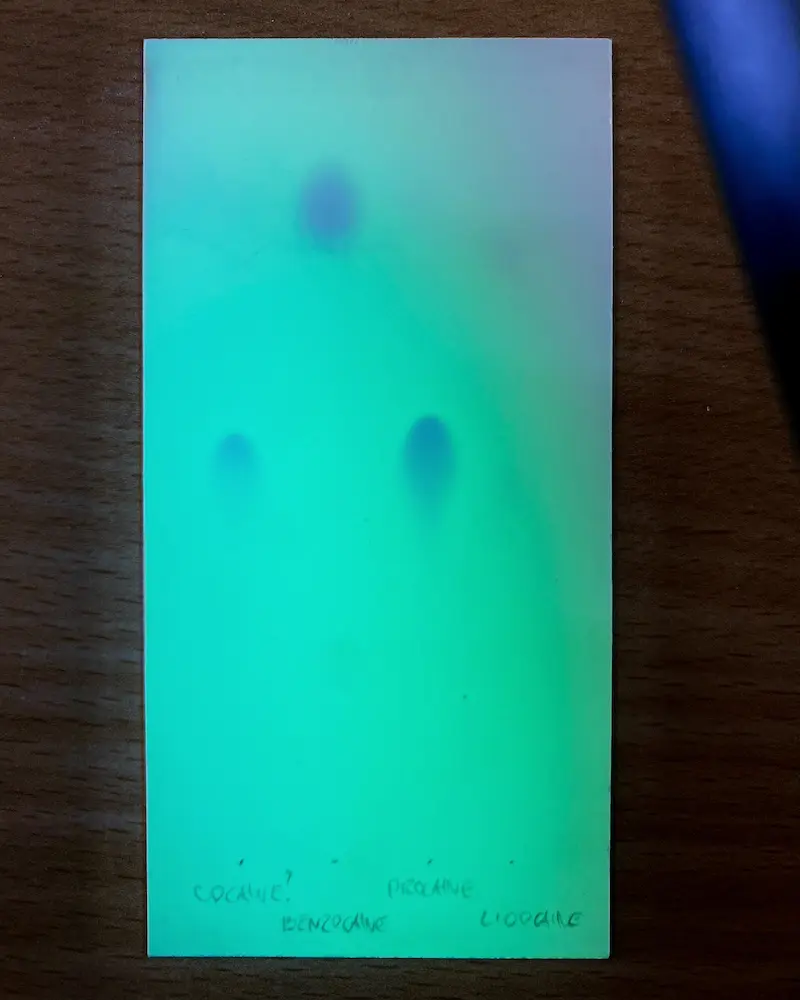
TLC test results with -caines
The cocaine purity test (TLC) can estimate the number and quantity of components, but like colorimetric reagents, it is prone to false positives. It is therefore crucial, as we always emphasize, to use TLC tests paired with colorimetric reagents. Benzocaine and lidocaine do not pose a problem, as you can see in the photo. However, procaine can interfere with the test result. We have prepared a solution.
What is Lidocaine?
Lidocaine is a drug belonging to the group of amidine local anesthetics. It is widely used in medicine, including dentistry, surgery, and various diagnostic procedures, to alleviate pain through local anesthesia. It works by blocking the conduction of nerve impulses.
What is Benzocaine?
Benzocaine is also a local anesthetic, similar to lidocaine. It is often used in various pain-relief products such as ointments, creams, gels, and aerosols. Benzocaine works by blocking the conduction of nerve impulses, helping to alleviate pain in the area where it is applied.
What is Procaine?
Procaine is another local anesthetic, similar to lidocaine and benzocaine. It is used for the temporary relief of pain by numbing specific areas of the body. Procaine works by blocking the conduction of nerve impulses, preventing the sensation of pain in the targeted area.
What is Tetracaine?
Tetracaine is a chemical substance that also belongs to the group of local anesthetics. Similar to lidocaine, benzocaine, and procaine, tetracaine is used in medicine to alleviate pain by numbing specific areas of the body. It works by blocking the conduction of nerve impulses, contributing to the temporary relief of pain sensation.
Cocaine test kit
The best test kit for cocaine is PRO Test’s Cocaine Reagent Test Kit which includes reagents Robadope, Simon’s, Mecke, Liebermann and Morris. It can reliably confirm presence of cocaine and help rule out most common cuts, both psychactive stimulants (cathinones, meth/amphetamine, caffeine) but also bulking agents such as lidocaine, tetracaine, procaine, levamisole and many other. To check the % of cocaine potency pair reagent tests with the TLC Cocaine Purity Test Kit.
Recommended cocaine test kits:
A positive or negative test kit result does not indicate if a substance is safe. No substance is 100% safe.
